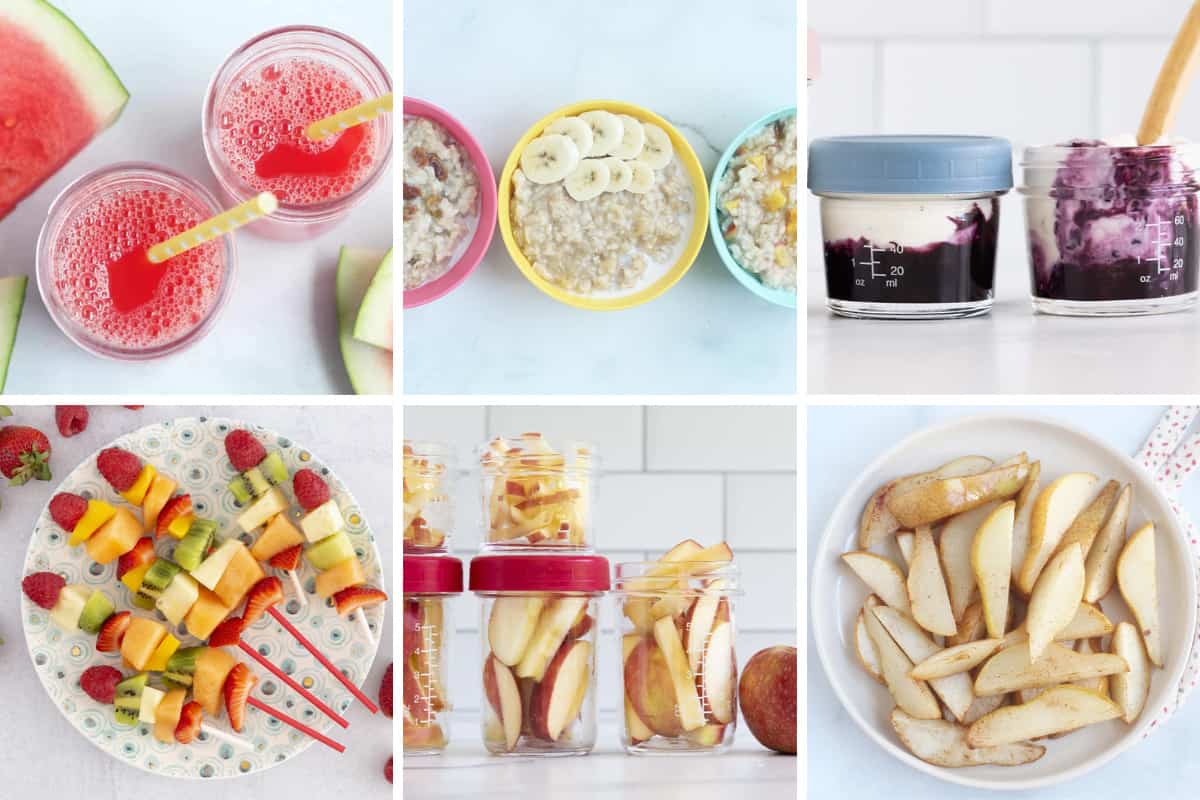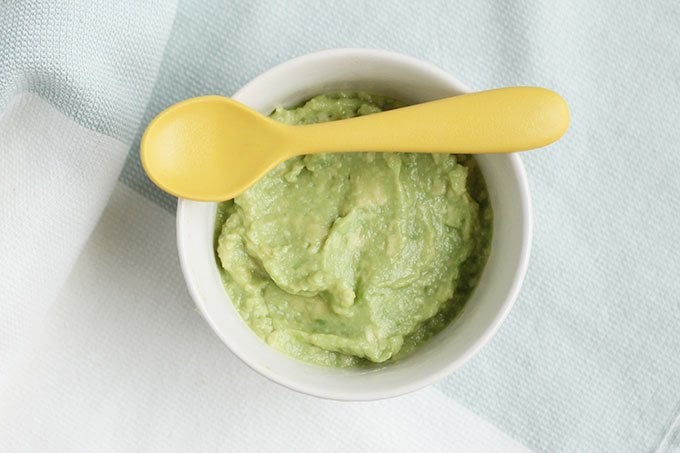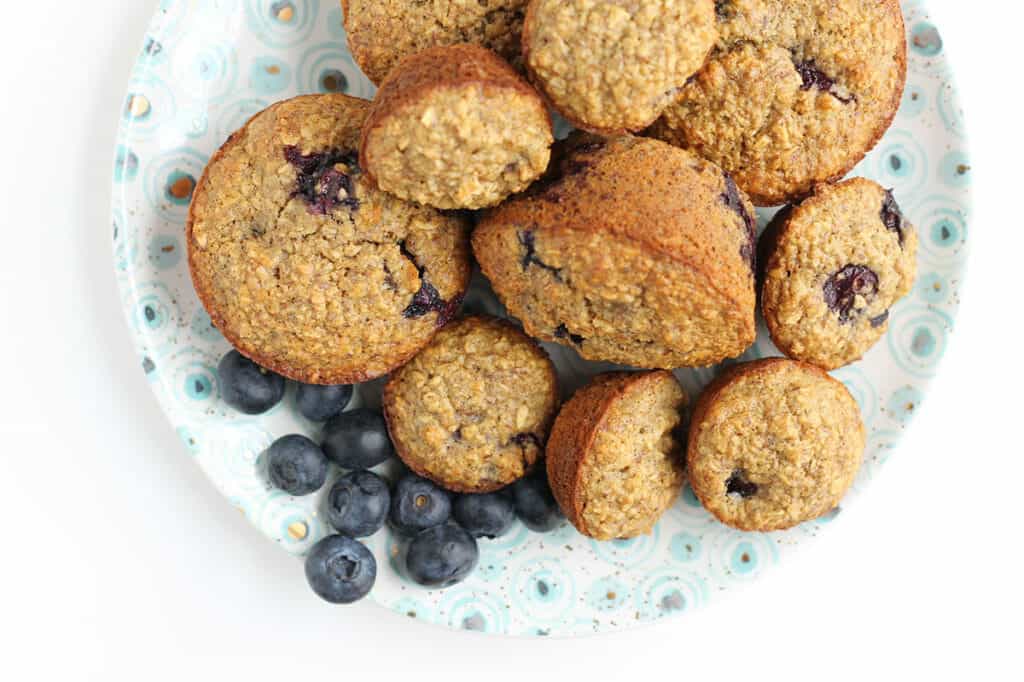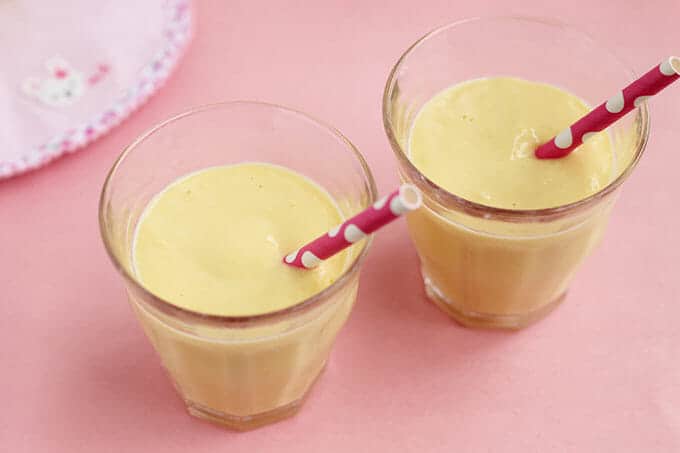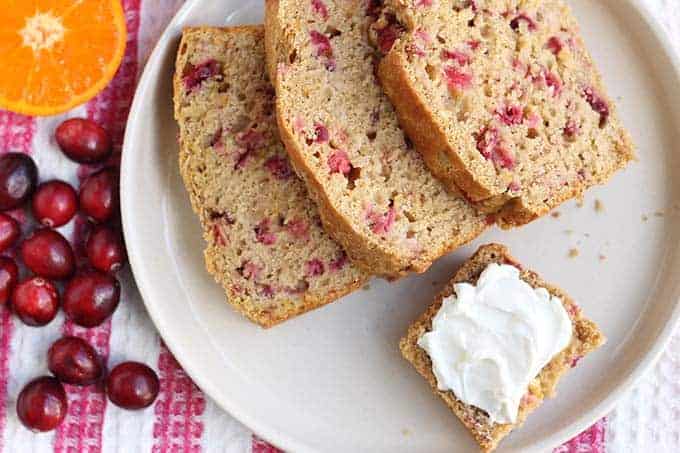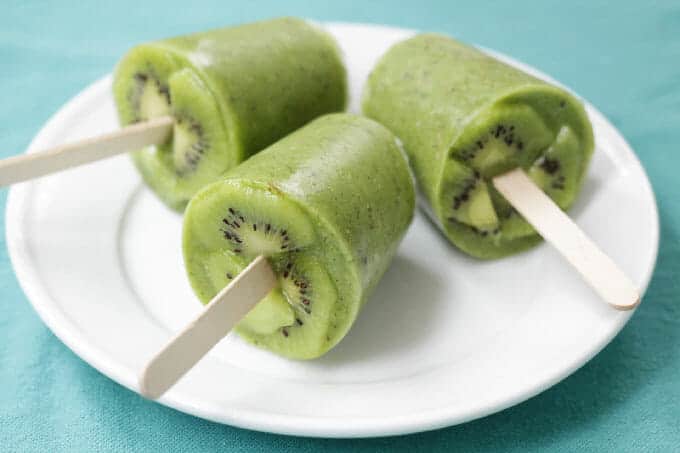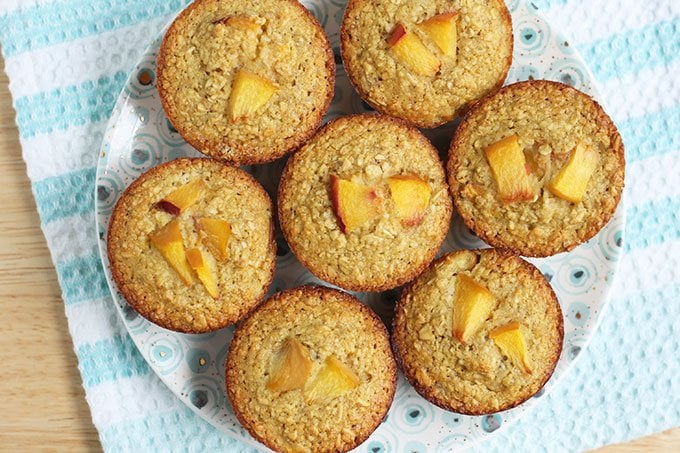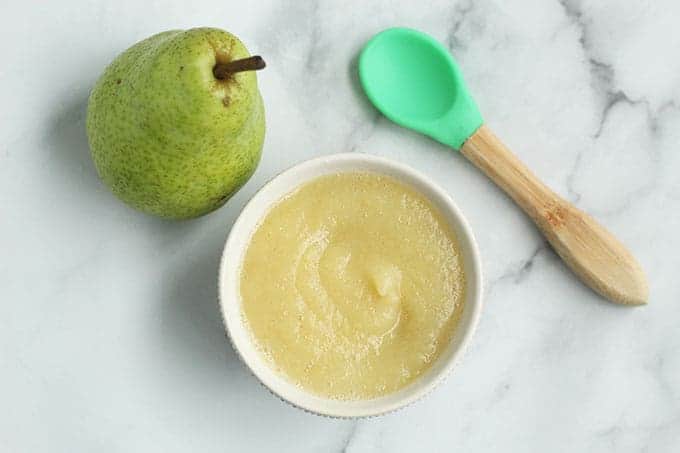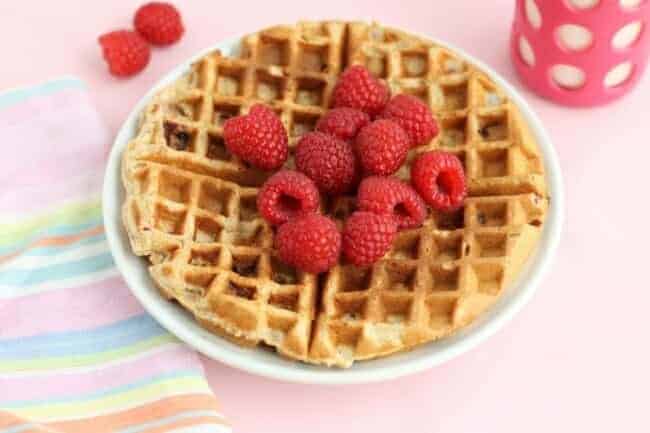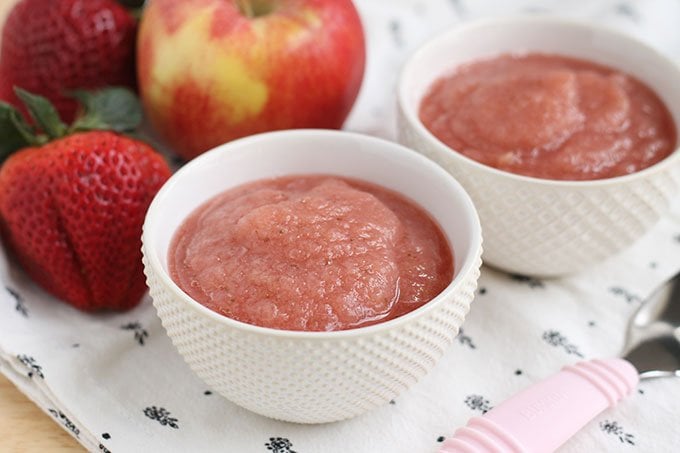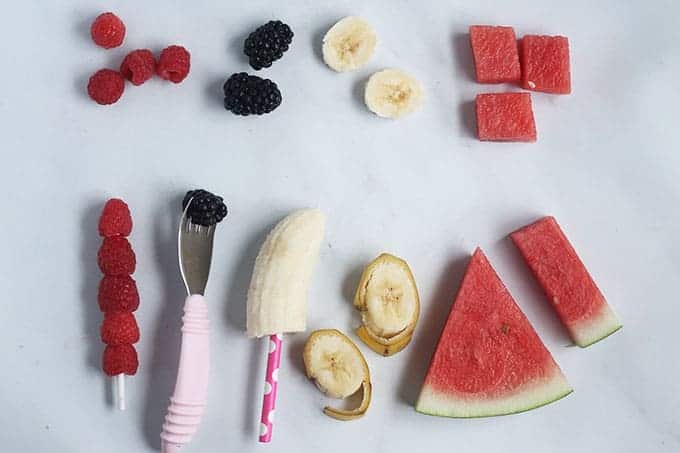We all want our kids to eat more produce, but convincing them to actually eat what we buy can be hard! This master list of fruit will help you learn which fruits for kids have the most nutrition, are easy for kids to eat, and are most likely to actually be eaten. Plus, recipe ideas for how to use them.
List of Fruits for Kids
Fruit is full of vitamins, minerals, and fiber, which can aid in digestion and help prevent constipation—and they taste good! It’s so easy to get into a rut of buying just apples, bananas, and oranges at the store, so this list of fruit for kids will give you new ideas to serve up some variety to the family.
My goal is to both keep the kids interested in actually eating their fruit AND will help ensure that they’re getting a range of nutrients throughout the week. So use this list for ideas for what to buy, how to store them, and how to use the fruits in recipes throughout the week as needed,
(You may also like my Master List of Vegetables for Kids, DIY Fruit Cups, and All-Fruit Ice Pops.)
Healthy Fruit for Kids
I always remind parents that kids who don’t love their veggies should be encouraged to enjoy fruit since they contain many of the same nutrients. The water content can also be really helpful in making sure that the kids don’t become constipated (which is an important thing to keep in mind because a kid who can’t go is a miserable kiddo).
They are also naturally sweet and are usually much more enjoyable for many kids than veggies.
Best Fruits for Toddlers
This list of fruits includes a wide range because pretty much any fruit is good for toddlers—you really don’t need to worry about the natural sugar content (promise). There are some considerations to take with choking hazards and chewing abilities, so you’ll see that info below.
Use the following list for ideas on how to serve fruits for kids raw and how to cook some of my favorite fruit recipes, too.
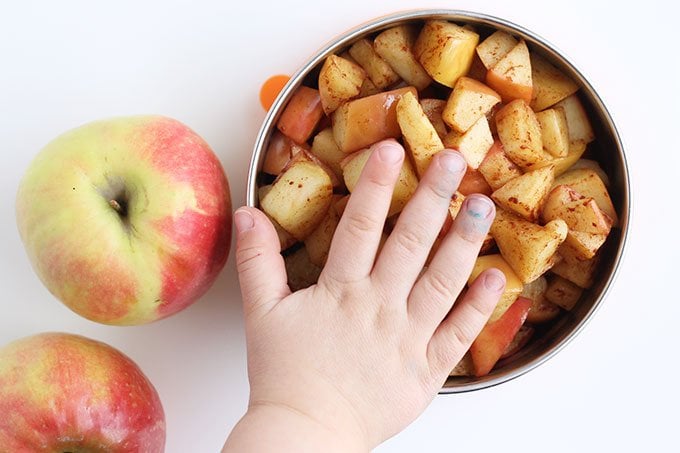
Apple
Raw apples can be a choking hazard up until age 4 if cut into chunks, though use your discretion if you want to offer them earlier and opt for softer varieties like Gala when possible.
You can also serve raw apples shredded to younger toddlers, which is much easier to chew. Also try these recipes for apples below.
You can use any type of apple you have or like, though generally tart cooking apples (like Granny Smith or Pink Lady) soften nicely without falling apart too quickly.
Get the recipe
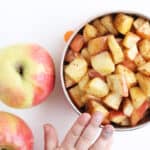
We like these apples warm or cold out of the fridge, so see what your kids like best!
Get the recipe
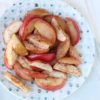
You can peel or not peel the apples, depending on your preference.
Get the recipe
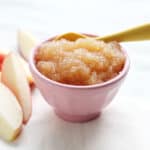
With just a few basic ingredients and fresh apples, your crock pot can do the rest of the work of making applesauce!
Get the recipe
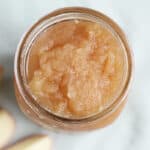
You can double this recipe to make a larger batch to warm up and serve throughout the week.
Get the recipe
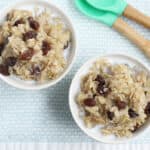
This Apple Baked Oatmeal is delicious and hearty. It’s delicate when warm, so let it cool fully before you slice it with a serrated knife. Serve it in slices like you would apple bread, or in a bowl to eat with a spoon or a fork.
Get the recipe
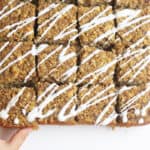
Perfectly spiced and just sweet enough, these Applesauce Muffins are a yummy breakfast or snack. We like these on their own, topped with nut or seed butter, or even with a smear of cream cheese. See what your littles like!
Get the recipe

These apple pancakes are hearty and filled with freshly shredded apples and oats, so expect them to have a lot of texture!
Get the recipe
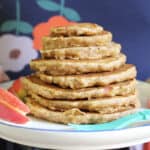
These fluffy Applesauce Pancakes are easy to mix up, taste sweet and comforting, and the leftovers store nicely in the fridge or freezer. We like them topped with a little maple syrup, peanut butter, or additional applesauce.
Get the recipe

Apricots
Putting together a list of fruits wouldn’t be complete without apricots! Fresh apricots can be hard to find if you live in a smaller town like we do, but when they’re in season and good, they’re a delicious fruit for kids!
They’re a very good option for toddler constipation and are a nice alternative to fruits like peaches and plums if you’re looking for variety.
You want to look for ones that give just slightly—if they are super firm, they aren’t quite ripe and won’t be very sweet. These energy bites are a favorite apricot recipe.
These healthy holiday cookies require only 10 minutes and 5 simple ingredients. And they store well so they’re a great option to make ahead!
Get the recipe
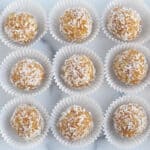
Avocado
An avocado is a fruit and it’s SO good for babies and toddlers due to the healthy fats it contains. You can serve it diced, sliced, or mashed on it’s own as a puree or spread onto toast.
Or, try adding a few tablespoons to a smoothie to add creaminess.
If you have some leftover avocado, try sticking it into a freezer bag in the freezer and using it for a smoothie later on!
My Avocado Puree is such an easy baby food recipe that requires hardly any time or effort—and it’s super versatile if you want to combine it with another puree too.
This easy baby food is rich in healthy fats, super smooth, and has a mellow flavor. This is a great puree to make when you’re eating something like tacos so you can have some, too!
Get the recipe
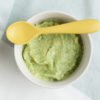
This makes two toddler-size servings or one serving for a hungrier smoothie-lover!
Get the recipe
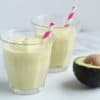
With a creamy, veggie-packed sauce, this easy Avocado Pasta is packed with kid-friendly flavor and nutrients. And the whole recipe can be made in about 10 minutes of cooking time.
Get the recipe
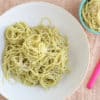
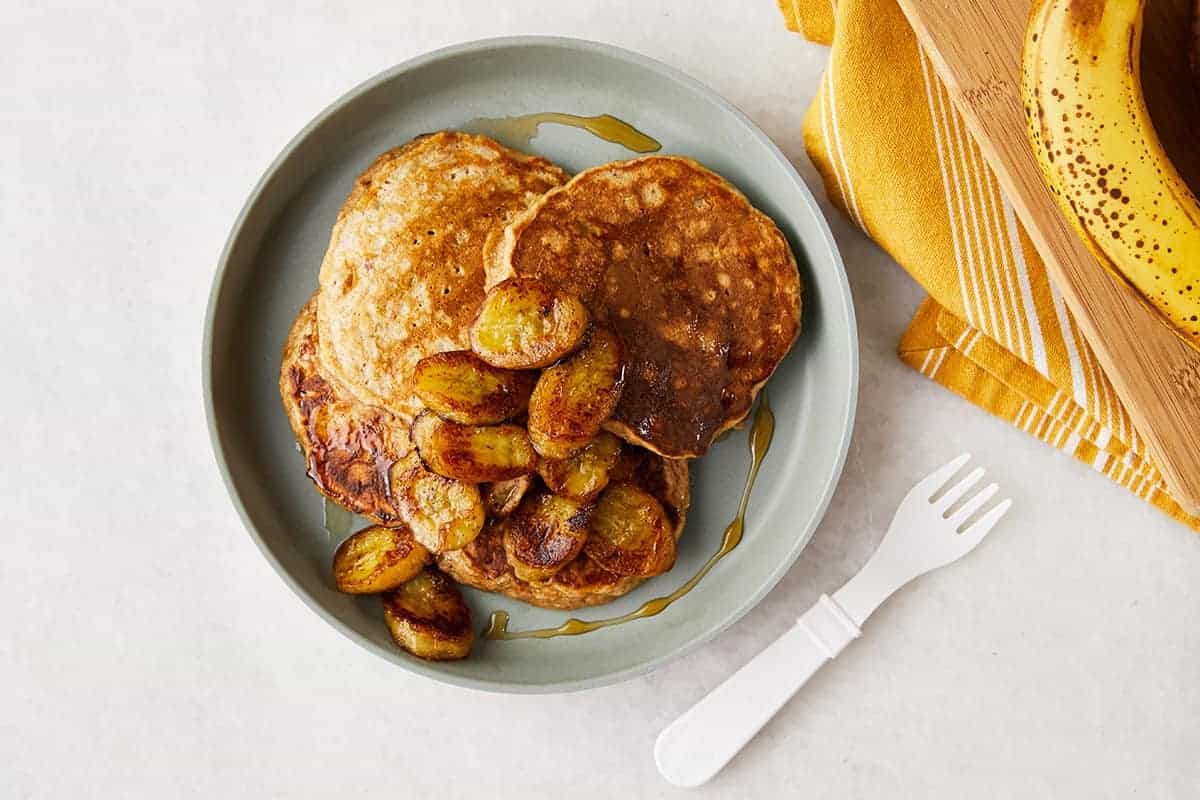
Banana
Fresh bananas are an easy snack that can be taken on the go or eaten at home. Smaller bananas will have less likelihood of winding up half-eaten.
And it’s fun to try the mini varieties which have a slightly different flavor and can mix up things a bit from week to week. Also try:
Use a ripe banana with at least some brown spots for the best flavor in this puree.
Get the recipe
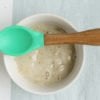
Very ripe (with brown spots) bananas will give these Banana Oatmeal Pancakes the best flavor. Dice them up or serve whole, according to how the kids prefer to eat them.
Get the recipe
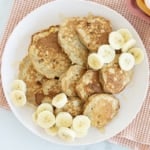
Be sure to use super ripe bananas—the more black and brown spots, the better the flavor and sweetness will be!—for the best results here. Adapted from The Salty Marshmallow
Get the recipe
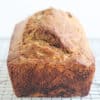
When you use a really ripe (or over ripe) banana in this recipe, it tastes so much like banana bread—but is much faster! See the options for which toppings make this even more delish.
Get the recipe
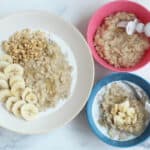
You can easily double this recipe to feed more!
Get the recipe

Get the recipe

Use a very ripe banana with a lot of brown spots in this recipe for the best flavor.
Get the recipe
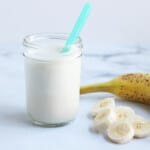
Be sure to use very ripe bananas (with lots of brown spots!) for the best flavor and natural sweetness. (I updated this recipe December 2020 to ensure the most reliable results. The original version of this recipe is the “Egg-free” option in the Notes if you loved that. In the main recipe, I reduced the oil, added an egg, increased the baking soda a smidge, and reduced the baking time. They’re great!)
Get the recipe
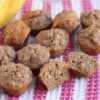
Make quick work of breakfast or snack time with this satisfying (and so yummy) Protein Banana Muffins recipe. It’s a delicious mix of nutrients and perfect to make ahead and share with the kids.
Get the recipe

These fresh banana popsicles are incredibly creamy and easy to make—and they’re a balanced snack or dessert to share with the kids. Try the base recipe or one of the optional flavors.
Get the recipe
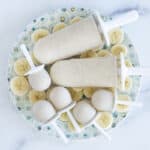
Blueberries
Fresh blueberries are a perfect kid snack. For younger toddlers and babies eating solids, I recommend slicing them in half to ensure that they are easy to chew. You can also try freeze-dried blueberries or frozen blueberries, which both have great nutrients.
And here are some ways to use blueberries in recipes for kids.
You can make this and serve it throughout the week, or stash some in the freezer for future use. Feel free to double this to make a larger batch.
Get the recipe
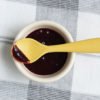
This quick and easy Blueberry Banana Smoothie is a great option for breakfast, snack time, or even dessert. (Frozen banana will create a slightly thicker smoothie, so if you plan to serve this through a straw, I recommend doing either frozen blueberries OR bananas, but not both. See the Notes at the end for more tips.)
Get the recipe
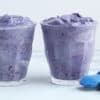
Fluffy and perfectly moist, these little muffins have protein and calcium—plus bursts of delicious blueberries. (Like Little Bites, but with more nutrients and for less $$.) See Notes for allergy variations.
Get the recipe
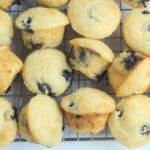
Like a cross between a fluffy blueberry muffin and baked oatmeal, these muffins are moist and packed with yummy nutrition.
Get the recipe
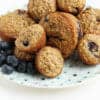
This bread is incredibly moist from the bananas and berries, so it takes a little while to bake through. I add foil in Step 4 to prevent it from becoming too brown. You can enjoy this chilled, cold, or at room temperature.
Get the recipe

You can make this with fresh or frozen blueberries. Use the yogurt option to turn it into a quick and easy chia seed pudding.
Get the recipe
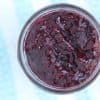
If you have a high-powered blender you can add up to a cup of spinach. If you’re relying on a food processor you may want to reduce it to ½ cup. Start with the lower amount and add more as you like.
Get the recipe
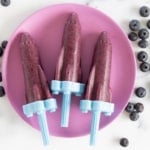
These oatmeal bars taste like an oatmeal cookie and are great for breakfast or snack. You can make them ahead, too! (You can add the egg or leave it out. Without egg, these are a crisp cookie bar texture. With it, they’re a little cakier.)
Get the recipe
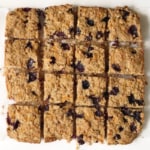
Cantaloupe
Fresh cantaloupe is so good during the summer with it’s musty, mellow sweetness. Look for one that gives slightly to the touch at the base and that smells like a cantaloupe for the best chances of bringing home one that tastes good. Serve it diced or sliced.
Learn safe ways to cut and serve cantaloupe to a baby (and to toddlers) with these easy options. Be sure to start with a ripe, soft melon to reduce the risk of choking.
Get the recipe
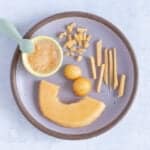
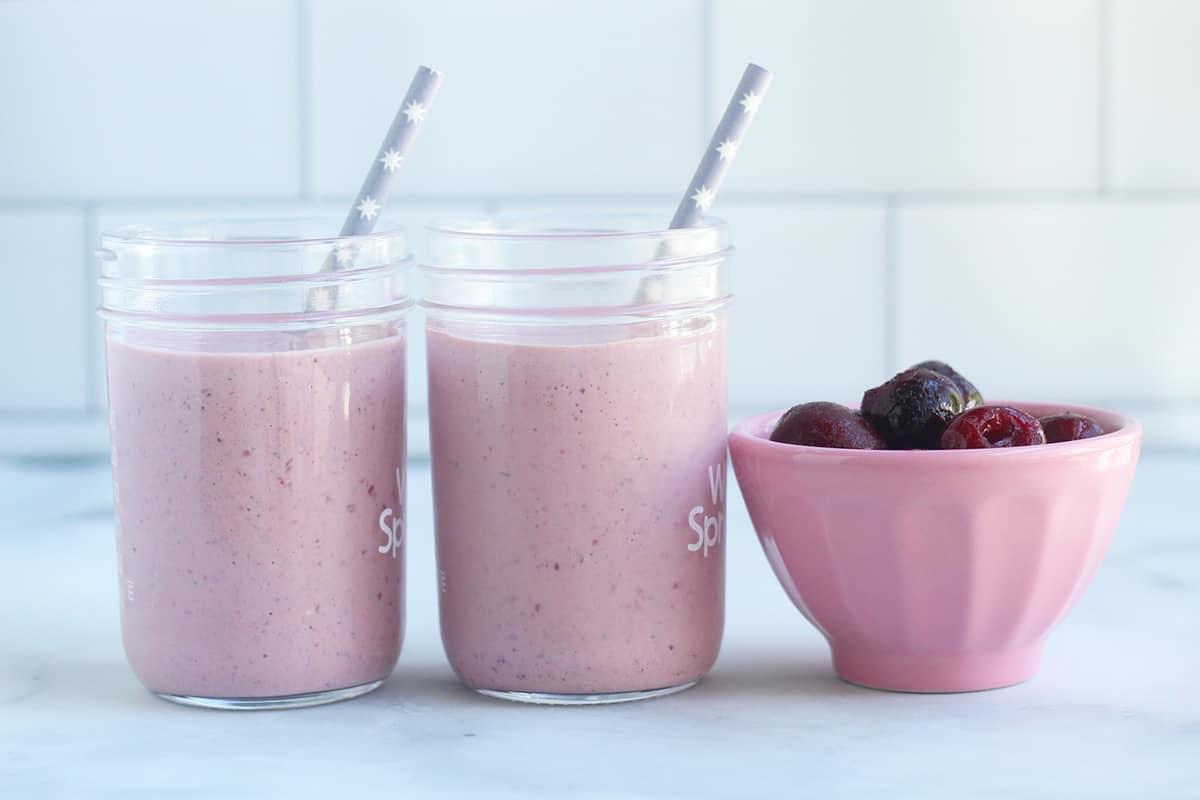
Cherries
Fresh cherries, while likely to be somewhat messy (get that bib out!), are rich in antioxidants and have a deeply intense flavor—they definitely belong on my list of fruits! Cut them in half and pop out the seed or use a cherry pitter. Also try:
Try this naturally sweet smoothie filled with cherries, banana, and creamy yogurt. Add the nut butter if desired for extra protein and flavor.
Get the recipe
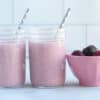
This is an epic of a basic muffin recipe that you can then add flavor to in all sorts of ways—from fruit to veggies to chocolate chips. The batter is packed with protein too, so the muffins are great for breakfast or snack. (The allergy-friendly substitutions are listed in the Notes section at the bottom.)
Get the recipe
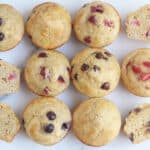
Citrus
Citrus is great for helping to boost immunity with Vitamin C and to add water to kid’s diets with their high water content. Look for oranges, blood oranges, grapefruit, clementines, mandarins and more to keep things interesting for your kids. Also try:
These take at least an hour or two to set in the fridge, so plan to make them a little in advance of when you want to serve them.
Get the recipe
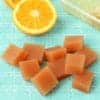
Make these freezer pops for a sweet snack or dessert. They’re loaded with probiotics and Vitamin C and taste super fresh.
Get the recipe
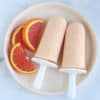
Bursting with vitamin C from citrus, mango, and carrots, this carrot smoothie is a delicious way to offer veggies to the kids. (The key to this smoothie is blending it super smooth, so don’t be afraid to let the blender run for 30-60 seconds!)
Get the recipe
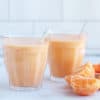
This fresh Mango Smoothie is thin enough to drink through a straw and thick enough to eat with a spoon. And of course, it’s super creamy!
Get the recipe

Cranberries
Fresh cranberries are too tart to eat straight up, but we love using them in bread! And you can also stir cranberry sauce into plain yogurt for a fall treat. Here are a few favorite cranberry recipes.
This delicious Cranberry Orange bread is flavorful and tender—and it works really well to bake ahead and store in the fridge or freezer until ready to serve it. We love it topped with cream cheese, but butter and honey also work.
Get the recipe
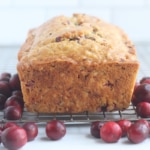
Combine a handful of simple ingredients into fresh Cranberry Orange Muffins to share with the kids come breakfast or snack time … or to serve alongside your favorite chili, soup, or holiday recipe. (These mini muffins work best with fresh cranberries.)
Get the recipe
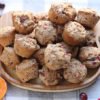
Yes, this is delicious on turkey, but it also makes a great jam or addition to a bowl of plain yogurt with honey!
Get the recipe
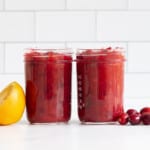
With sweet-tart flavors and an easy method, this pie is perfect for the winter holidays! Use fresh or frozen cranberries in this recipe for the best results. Discard any that are blemished or shriveled.
Get the recipe
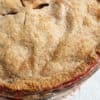
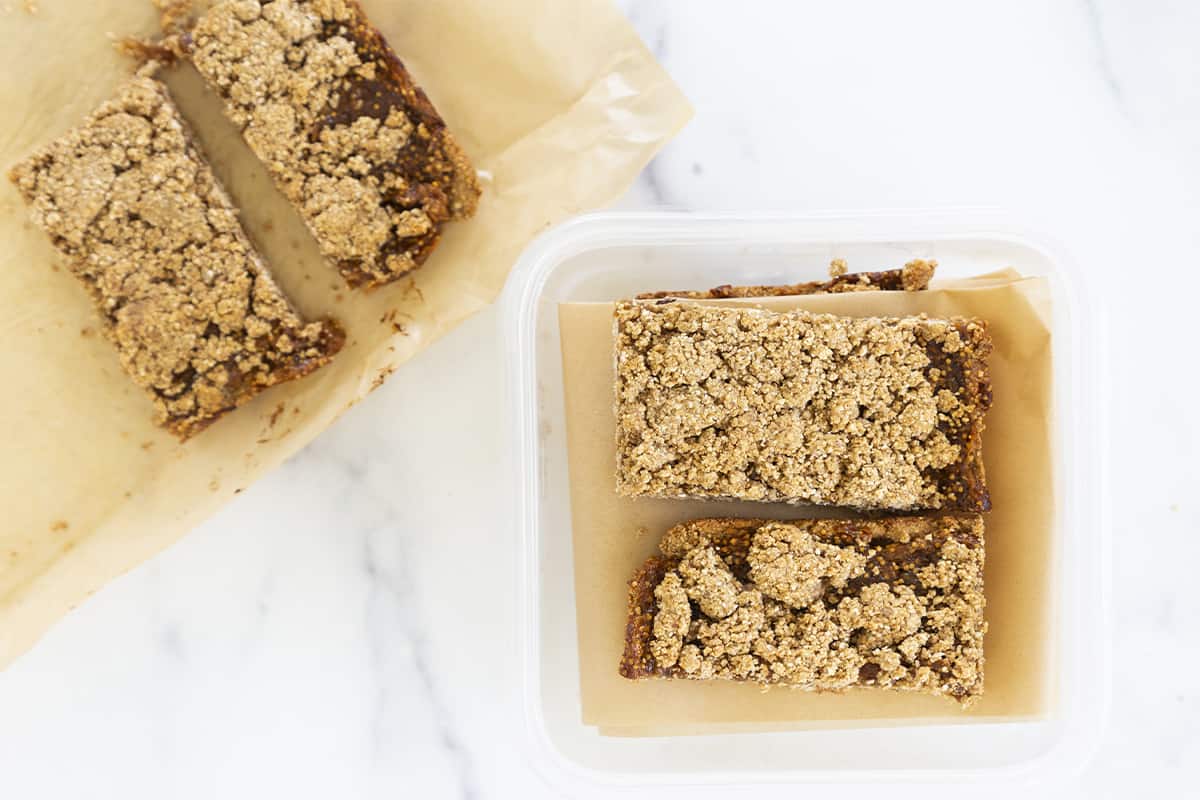
Figs
Fresh figs are one of my favorite things in life and if you’re lucky enough to live in a place where you have access to them, buy them up! The interior is soft and sweet and will likely be enjoyed by kids.
You can also try dicing up dried figs or softening them in oatmeal as another option.
Transform pantry staples into these amazing Fig Bars that pack protein, whole grains, and delicious flavor into one bar. These have similar flavor to store bought bars, but with less sweetness and more satisfying nutrients. YUM.
Get the recipe
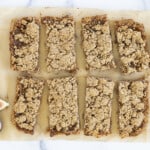
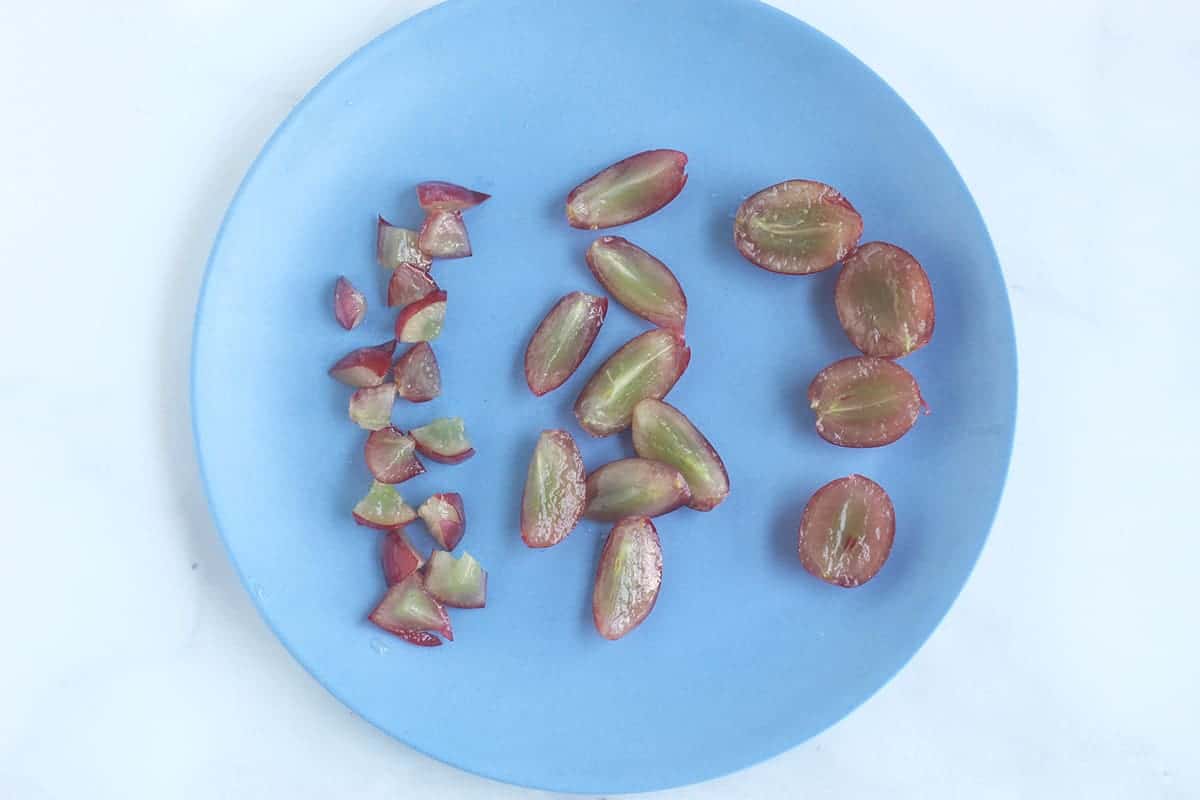
Grapes
Grapes, which should be slighted longways in half or quarters to prevent choking, are usually a favorite fruit for kids. Change up the color that you buy between green, red, and black and look for the new varieties like the long skinny ones to keep things interesting.
I like to make these with red grapes. Choose seedless to avoid seeds in the blender.
Get the recipe
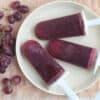
Made with just two simple ingredients, these fruit slushies are super delicious and refreshing. They’re a great drink for warm days! Plan to freeze the apple slices, grapes, and watermelon cubes the day before (or at least in the morning) when you want to make these.
Get the recipe
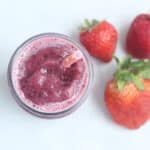
Learn the easiest way to cut grapes to serve them safely to babies and toddlers.
Get the recipe
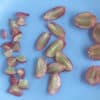
Honeydew
Similarly to cantaloupe, you want to look for a fresh honeydew that gives just slightly at the base and that smells sweet. Honeydew are often firmer to the touch on the outside than other melons, so it can be hard to judge a ripe one—this would be a good one to ask the produce manager for your store for help choosing!
Kiwi
Kiwi, which come in the classic green color and a slightly smoother yellow variety, are a good way to serve up Vitamin C and fiber. They can be sliced in half and eaten with a spoon or diced or sliced (after removing the skin). Or try:
If you want to make more pops, simply double the recipe! If you have a toddler who’s super sensitive to textures, use mango instead of kiwi for extra creamy results.
Get the recipe
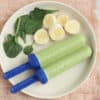
Feel free to increase the amount of puree to have more in your frozen stash for later.
Get the recipe
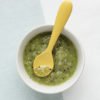
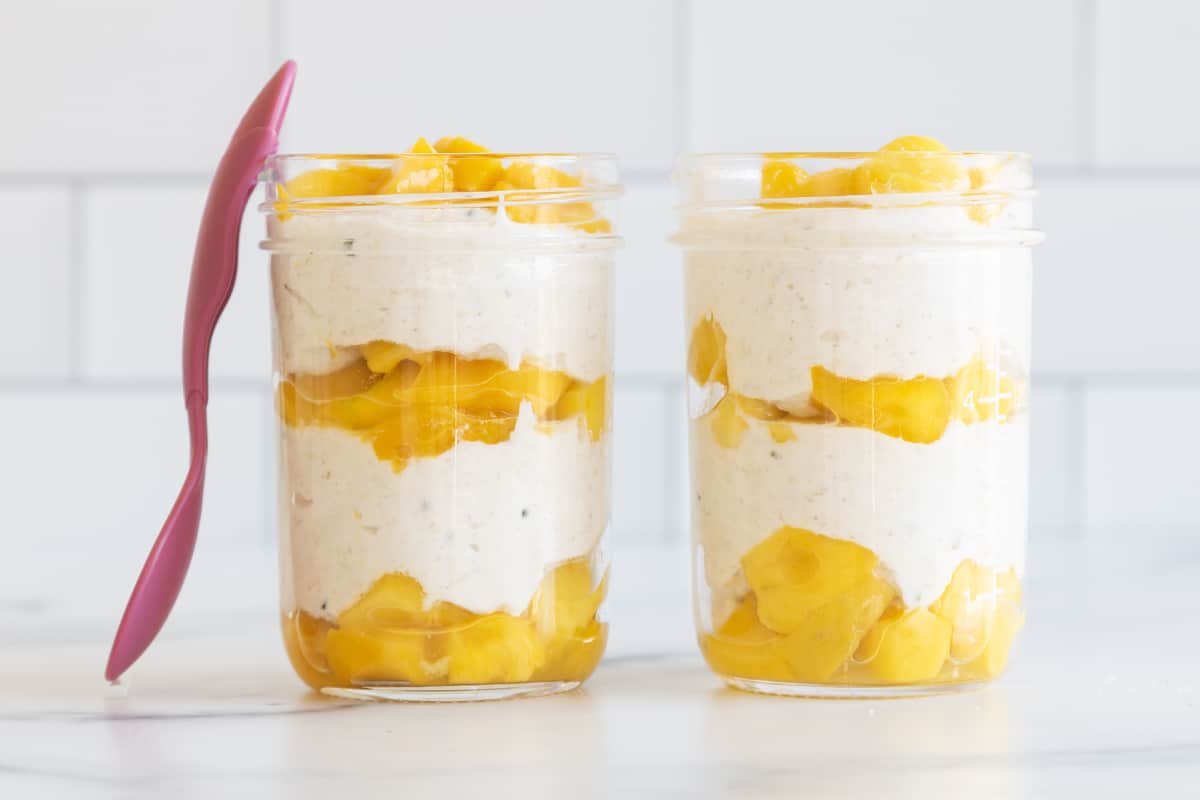
Mango
Fresh mango is sweet and soft and is a good fruit for babies, toddlers, and kids—it’s a must on my list of fruits too. You can serve it diced or sliced and if you think that doing that is too much work, try buying a bag of frozen mango cubes and letting them thaw.
They’re often just as good as fresh mango and the work of cutting them up is already done! Also try:
Get the recipe
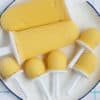
This fresh Mango Smoothie is thin enough to drink through a straw and thick enough to eat with a spoon. And of course, it’s super creamy!
Get the recipe

You can use either fresh or frozen mango for this recipe. It can be served by itself or mixed together with another puree, plain yogurt, oatmeal, or cottage cheese. (It also works as an adult food drizzled over fish tacos or stirred into a drink.)
Get the recipe
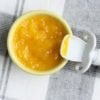
You can blend all the ingredients together to make a more uniformly smooth texture if your toddler (or you!) prefer.
Get the recipe
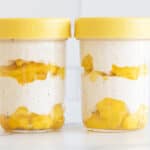
Peaches
Fresh peaches, which should be slightly soft and fragrant, are so good in the summer. Cut them up into smaller pieces for younger toddlers and remove the skin if needed. Older kids can eat them straight up!
(They brown after a while when sliced, so try not to cut them too far in advance of serving unless using them in my DIY Fruit Cups.)
You can use either fresh peaches or thawed frozen slices to make this recipe. Serve it as a baby food or use it to add flavor to yogurt, oatmeal, or even vanilla ice cream.
Get the recipe
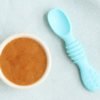
Transform fresh (or frozen) peaches into the most delicious peach sauce with this simple method. It’s a delicious fruit puree to share with a baby or toddler that you can serve on its own or mixed with yogurt or oatmeal.
Get the recipe
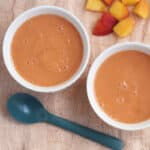
You can use fresh or frozen peaches in this recipe. Reduce the honey or maple syrup to 2 tablespoons or omit it all together if desired. (The resulting muffins will be a little less moist, but still very moist!)
Get the recipe
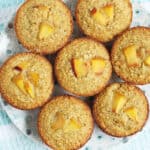
You can make these with slightly underripe peaches (which is handy if you happen to have a lot of them).
Get the recipe
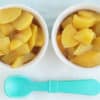
This simple smoothie is easy to make and is super creamy without many ingredients. You can even share it with your kiddo! Be sure to blend it very well to ensure the best creamy texture.
Get the recipe
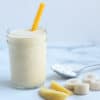
Blend together these refreshing and creamy peach pops for a simple summer dessert.
Get the recipe
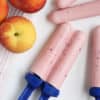
Pear
With Bartlett, Bosc, Anju, Asian, Seckle…there are so many delicious varieties of pears that come in green, red, and brown colors. Pears ripen well on a shelf at room temperature, so I recommend buying them firm and letting that happen at home to avoid super ripe ones becoming bruised on the way home from the store.
(They brown after a while when sliced, so try not to cut them too far in advance of serving.)
Use ripe pears—they should give just a little to the touch and smell like a pear—for the best flavor in this puree. Some babies may want a few spoonful, some a bowlful. Follow baby’s cues to determine the right amount for them.
Get the recipe
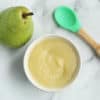
Transform fresh pears into the most delicious fruit sauce with this simple method. It’s a delicious fruit puree to share with a baby or toddler that you can serve on its own or mixed with yogurt or oatmeal.
Get the recipe
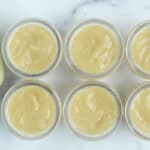
We like these apples warm or cold out of the fridge, so see what your kids like best. They work as a simple snack or served with yogurt, oatmeal, or roasted meat.
Get the recipe
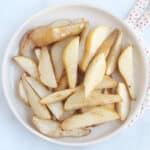
Transform any variety of pears into these delicious cinnamon cooked pears. Serve them as a simple side or snack, or cut a little smaller for a finger food for babies.
Get the recipe
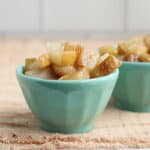
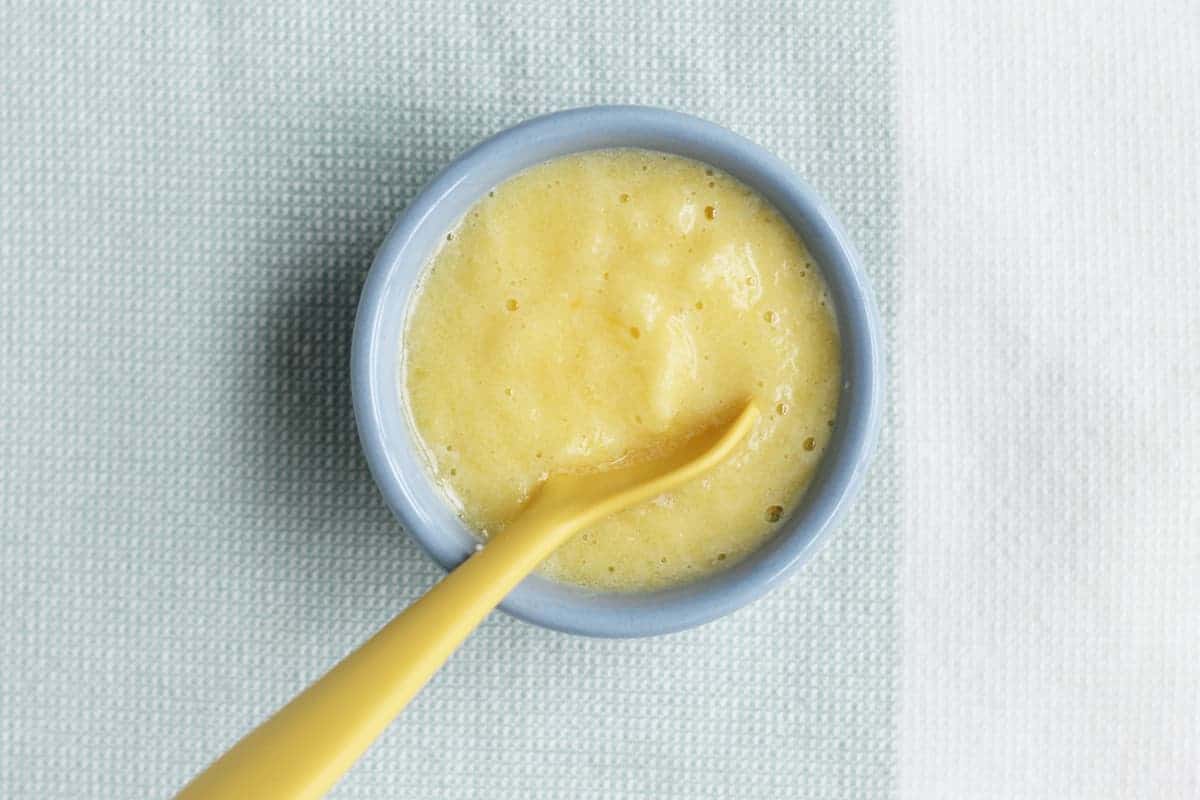
Pineapple
Whether fresh, thawed from frozen, or canned in 100% fruit juice, pineapple is sweet and delicious. Try it as a side dish for tacos or Asian food, or served over cottage cheese, 80s style! This is another fresh fruit that should give slightly at the base and should smell like a pineapple.
Feel free to double this recipe to make a larger batch.
Get the recipe
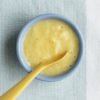
Plums
Plums are sometimes forgotten about, but ripe summer plums are soft and mellow—making them a healthy fruit for kids. Try black, red, and the speckled varieties to see which ones your kids like best and remove the skin for younger toddlers if it’s too hard for them to chew.
Pomegranate
Popping fresh pomegranate seeds into a mouth is so fun and is often very entertaining for kids. Buy a whole pomegranate, cut it in half, and let the kids lightly tap the back of each side with a spoon to get the seeds to fall into a bowl.
OR just buy pomegranate seeds and cut out the work!
Raspberries
Fresh raspberries are a great source of fiber and vitamins and are nice and low maintenance since you don’t even need to cut them. (Though you may want to halve or mash them for older babies depending on their experience with solids).
If fresh raspberries are too pricy at certain times of the year, try buying frozen ones and adding them to smoothies. Or dehydrated or freeze-dried ones for a snack. And try:
This tastes best with raspberries that taste good to you, so taste one before you start! (See the Notes for suggestions on what to do if they’re a little tart.)
Get the recipe
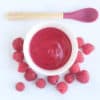
Get the recipe

Learn how to make fluffy, tender, healthy waffles that are bursting with fresh berries. Serve these warm from the waffle maker or store for later to reheat quickly in the toaster.
Get the recipe

With a bright, fresh flavor and an ingredient list that’s packed with nutrition, these Raspberry Muffins are truly something special. If you (or your kids!) love raspberries, these are a must-make!
Get the recipe

Blend a handful of nutritious ingredients into a deliciously refreshing Raspberry Smoothie. With options to make this with banana or without, ways to add protein, and tips for storing leftovers, this post has everything you need to get started. See the Notes for variations.
Get the recipe
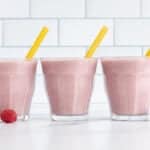
Strawberries
Fresh strawberries are sweet, easy to eat, and are often a favorite on a list of fruits for kids. Look for ones that are uniformly red (not with too many white spots).
When you get them home from the store, wash and dry them thoroughly and store in a paper towel lined container to extend their life. And try:
This simple puree is no-cook, so be sure to start with great-tasting berries. It’s a perfect fruit puree for a baby, or a delicious way to add flavor to yogurt and oatmeal for all members of the family. (It’s also great with ice cream and waffles!)
Get the recipe
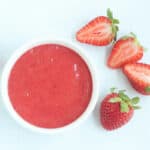
Creamy and delicious, you can make this with fresh strawberries or freeze-dried ones. The version with freeze-dried berries tastes more similar to store-bought strawberry milk; the one with fresh berries tastes more like fresh strawberries!
Get the recipe
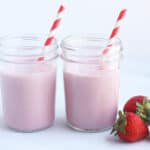
You can use fresh or frozen berries in this simple Strawberry Smoothie and the results will have a texture that is similar to drinkable yogurt. To make it thicker and to try different flavor options, see the Notes at the end of the recipe.
Get the recipe

With fresh berries and a burst of lemon, these healthy Strawberry Muffins are a delicious and nutritious breakfast or snack to share with the kids.
Get the recipe
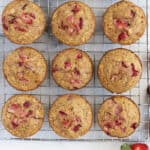
With bright berry flavor and a creamy texture, these freezer pops are a delicious and nutritious dessert or snack. If making these for a baby, omit the optional sweetener.
Get the recipe

This recipe was updated in February 2021 to increase the amount of cupcakes from 9 to 12. You can make the strawberry puree up to 3 days ahead of time to make this easier.
Get the recipe

This Strawberry Frozen Yogurt is so fresh and so creamy. It does freeze firm, so plan to let it sit at room temperature for 20-30 minutes before serving.
Get the recipe

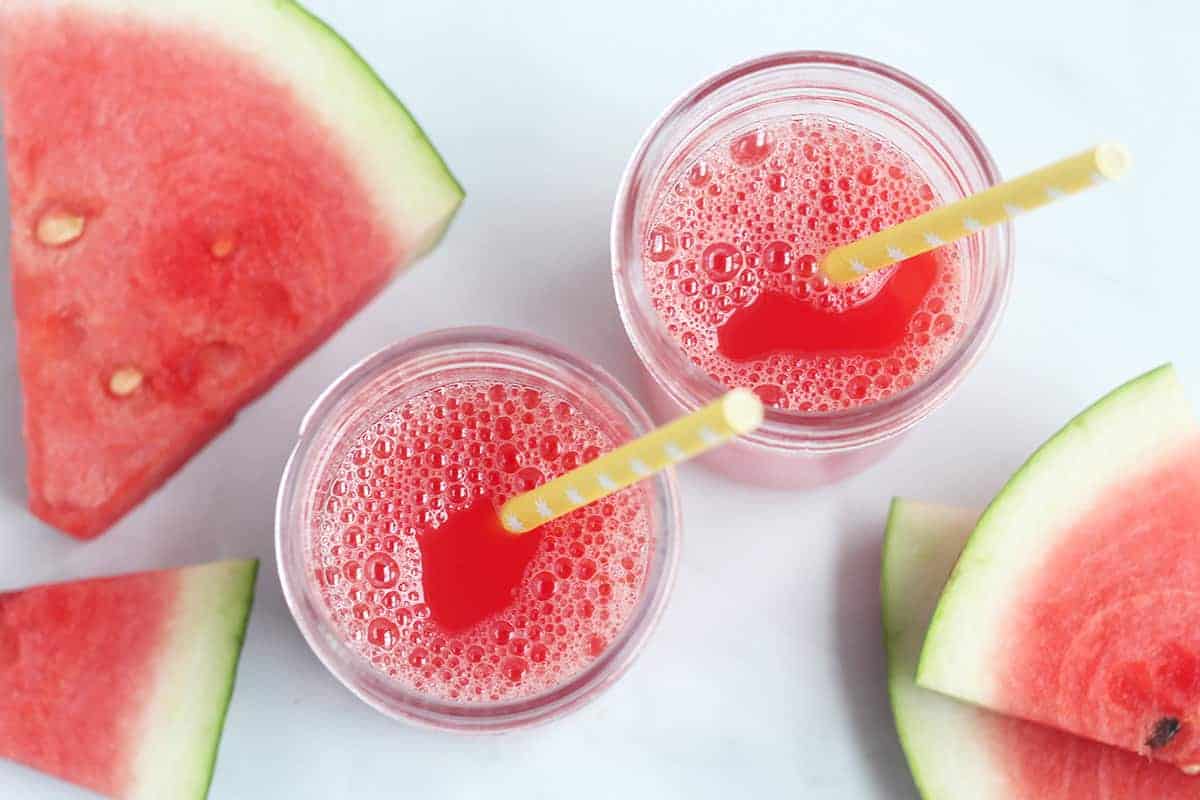
Watermelon
Fresh watermelon, whether served diced, sliced, or in wedges, is a perfect summer fruit for kids. It has a high water content, so it’s great for kids who don’t love drinking water, and it’s rich in antioxidants and vitamins.
We also like to blend seedless watermelon into juice—blitz it in the blend, strain it through a fine-mesh colander, and serve it up cold. So good!
This is a perfect way to use up some of a giant watermelon and is also a wonderful way to help the kids stay hydrated in the warmer months. You can scale the recipe up or down to make more or less as you like.
Get the recipe
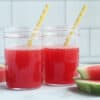
Using frozen watermelon ensures a cold and creamy smoothie that blends easily in the blender. Plan to freeze the watermelon at least 6 hours before you want to make the smoothie.
Get the recipe
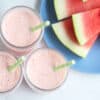
Transform fresh watermelon into the most refreshing sorbet with one simple technique. It’s a great dessert or hydration strategy to share with the kids!
Get the recipe
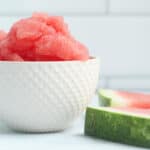
Final Notes on this List of Fruits for Kids
It’s 100% normal for kids to go through phases of loving one fruit for days and then flatly refusing it.
This is a reason that it’s good to aim for variety each week and not just buy the two fruits that you know your child loves at that point in time…since you never know when they’ll change their minds.
Expect them to go through cycles and try not to totally write off a refused fruit. Instead, give it a break for a few weeks and then buy it again. It’s likely they just needed a break!
And play around with how you serve them (see above for ideas). Sometimes small tweaks can make a giant difference.
Related Posts
I’d love to hear which fruits your kids love so please chime in below in the comments!
This post was first published December 2019.


